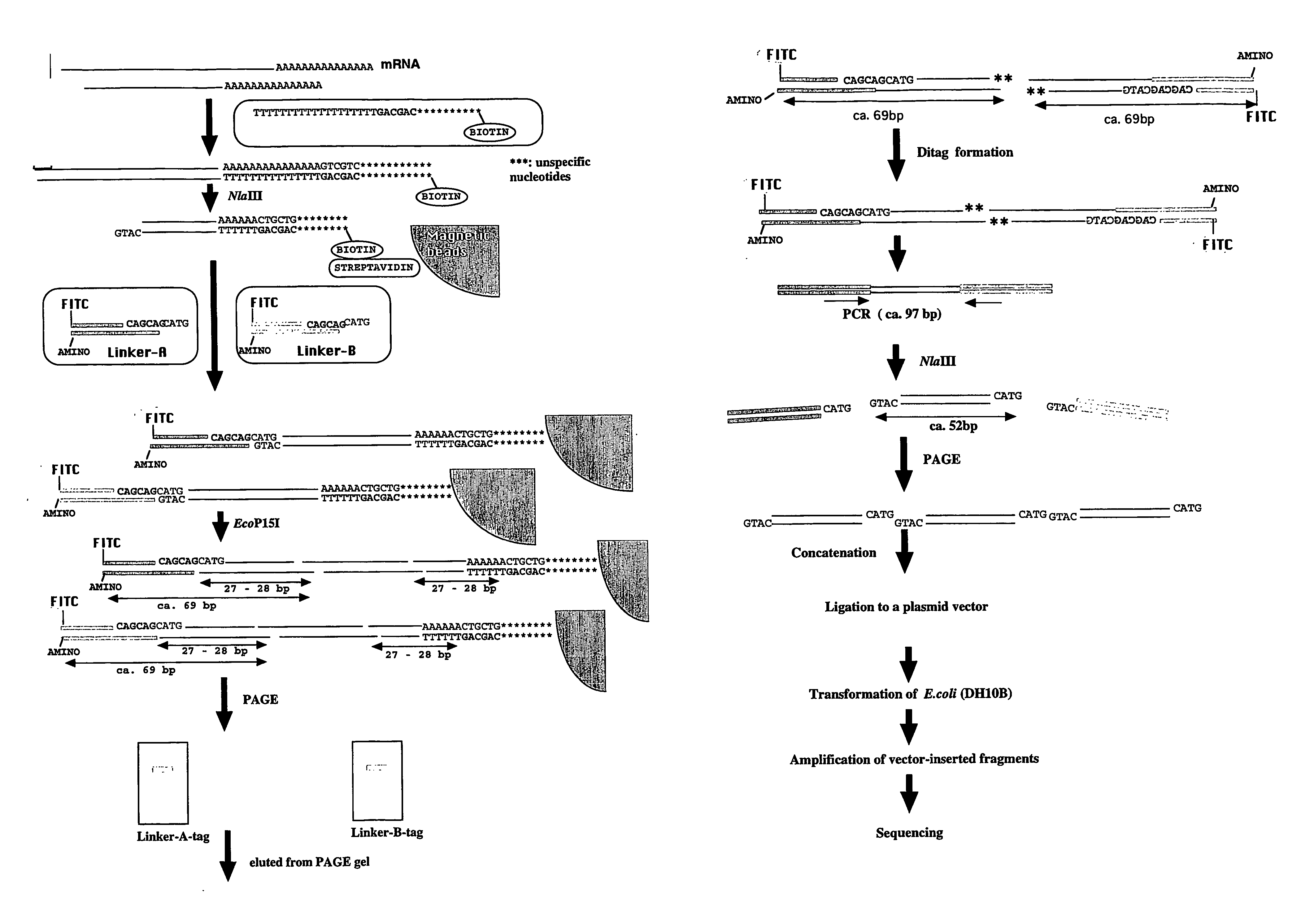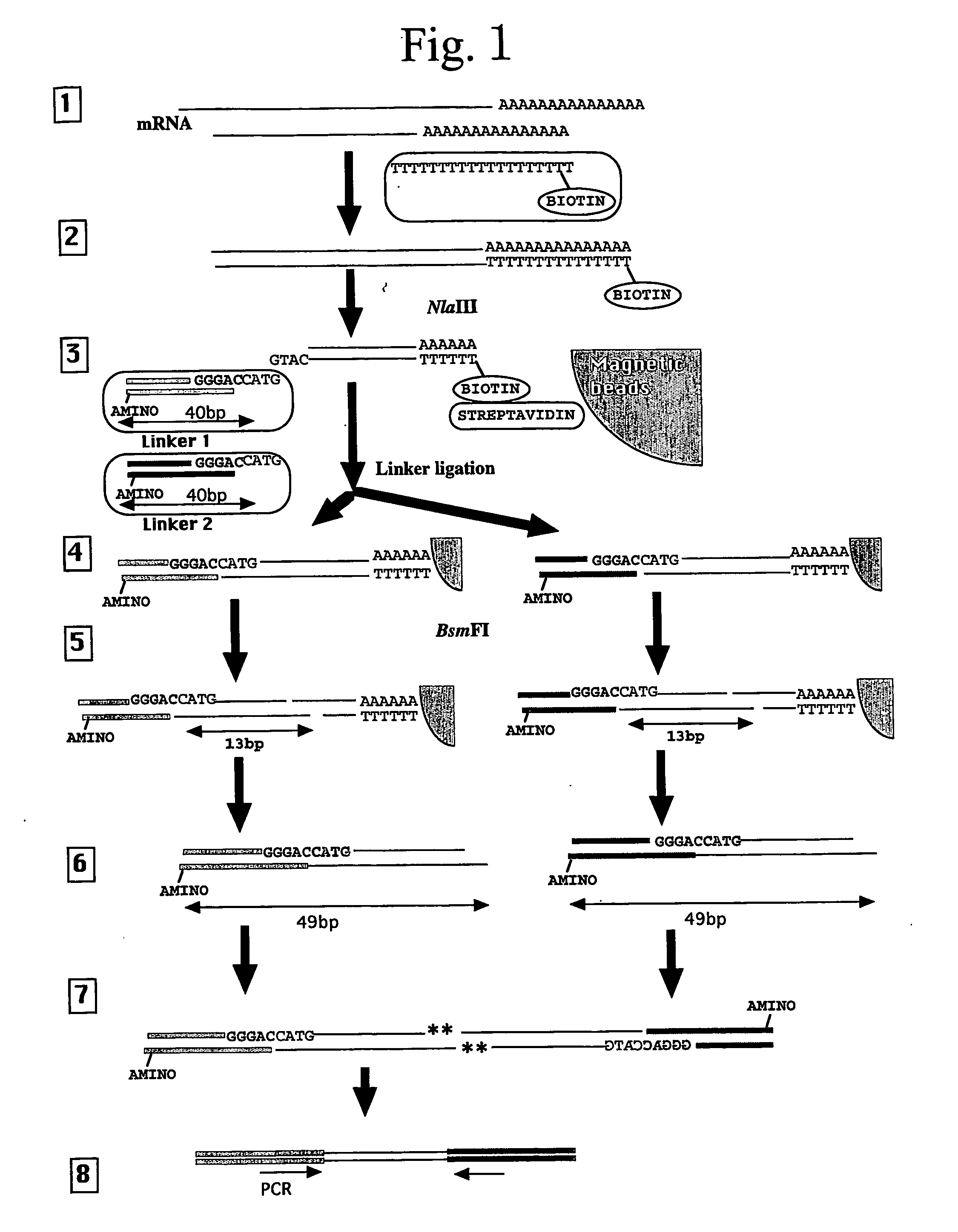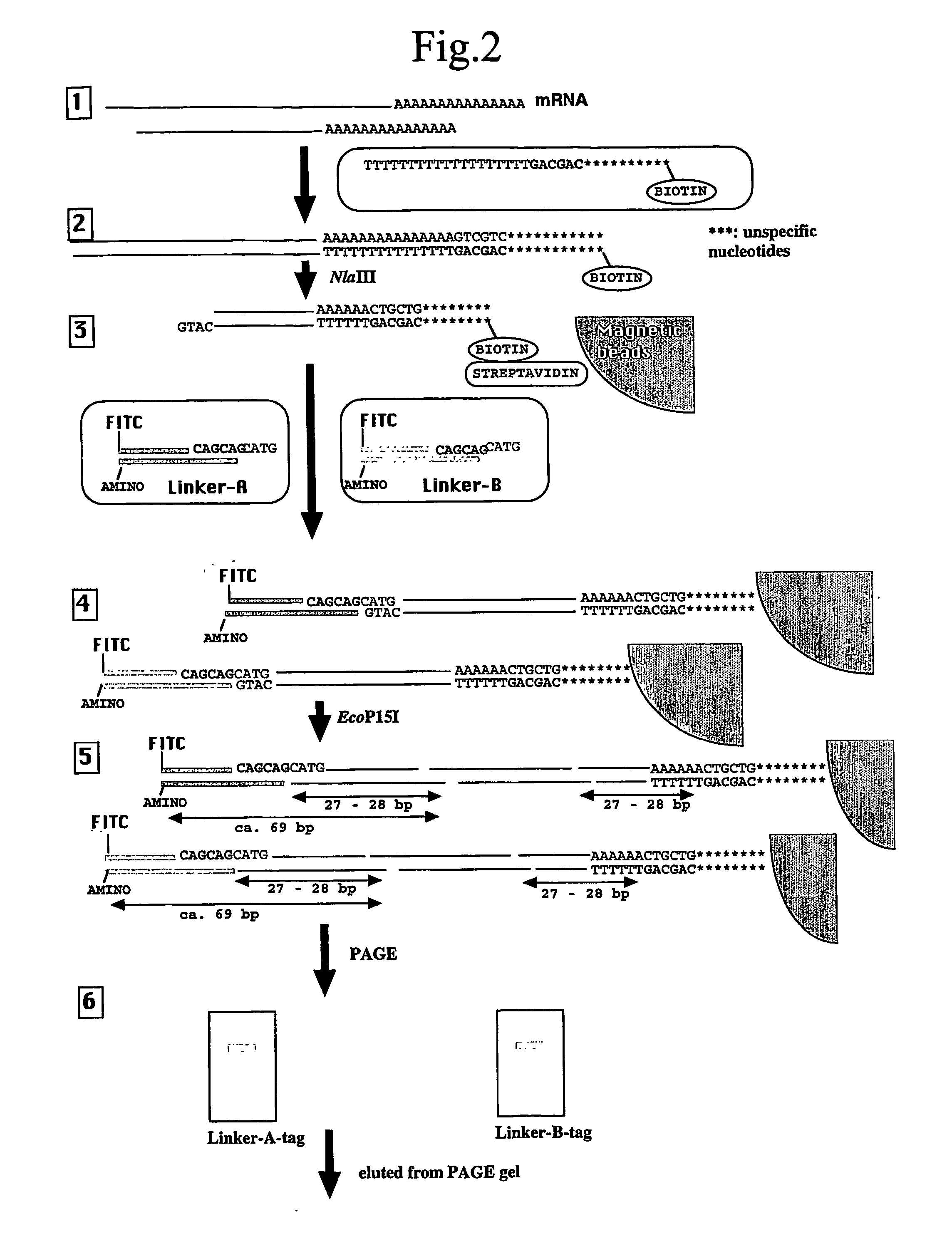Use Of A Type III Restriction Enzyme To Isolate Identification Tags Comprising More Than 25 Nucleotides
a restriction enzyme and tag technology, applied in enzymology, organic chemistry, biological water/sewage treatment, etc., can solve the problems of insufficient size of the tag sequence (only 13 bp), insufficient identification of the corresponding gene, so as to increase the efficiency of reliably identifying the corresponding gen
- Summary
- Abstract
- Description
- Claims
- Application Information
AI Technical Summary
Benefits of technology
Problems solved by technology
Method used
Image
Examples
example 1
[0082] As a proof of principle, 26- and 27-bp tag sequences were isolated from leaves of a lesion-mimic mutant IB2020 of rice (Oryza sativa cv. Kakehashi) by the method described above.
1) Preparation of mRNA
[0083] Total RNA was isolated from leaf blades of rice by a conventional RNA isolation method. From this RNA, 5 μg of mRNA were isolated using an “mRNA Purification Kit” (Amersham Pharmacia). The mRNA was dissolved in 29 μl of DEPC water, and used as source material.
2) cDNA Synthesis Using oligo-dT Primer
[0084] This mRNA was reverse-transcribed using a “cDNA Synthesis System” (Invitrogen) to generate single-stranded cDNA using the following reverse transcription-primer comprising the 5′-CAGCAG-3′ motif that is a recognition sequence of the enzyme EcoP15I.
[0085] Reverse Transcription-Primer:
(SEQ ID NO:1)5′-CTGATCTAGAGGTACCGGATCCCAGCAGTTTTTTTTTTTTTTTTTTT-3′
The product was converted to double-stranded cDNA using the same kit ethanol precipitated, and dissolved in 20 μL of ...
example 2
[0106] To demonstrate that the 26-bp tag size of SuperSAGE allows a highly reliable annotation of the tag to the gene, the following experiment was conducted.
[0107] Thirty 26-bp tags were randomly selected from Table 1. These DNA sequences were truncated from the 3′-ends so that the tag sizes became 20, 18 and 15 bp, respectively. The tag size of 15 bp corresponds to that used in the conventional SAGE™. The 18-bp or 20-bp tags were extracted from the tag of LongSAGE™, when the linker-tag fragments were ligated to each other with and without end-blunting, respectively. Using each of the tags of different sizes, a BLAST search was conducted from the entire body of DNA sequences deposited in Genbank representing DNA sequences from more than 130,000 species. The number of species that contained DNA sequences showing a perfect match to a tag of a given size was counted, and the average and maximum numbers of species were obtained across the 30 tag sequences. The search result are summari...
example 3
[0116] To demonstrate that SuperSAGE with 26-bp tags can be used for gene expression analysis of organisms for which DNA sequence data are not available, the following experiment was conducted. SuperSAGE was applied to gene expression analysis of a plant species, Nicotiana benthamiana, which was treated with either an protein elicitor INF1 from Phytophthora infestans (Kamoun et al. Mol. Plant-Microbe Interact. 10:13-20, 1997) or water. The leaves were collected one hour after infiltration of elicitor or water (flooding), and RNA was isolated therefrom.
[0117] More than 5000 tags were successfully isolated from each of the samples (Table 5). The ten most abundantly observed tags 15 in the Table 5 were used directly for 3′-RACE, and the resulting cDNA were sequenced. BLAST searches of the cDNAs identified the genes corresponding to the tags as given in Table 5.
TABLE 5The 10 most frequently observed tags inNicotiana benthamiana leaves revealed bySuperSAGEflood-CorrespondingTag Sequen...
PUM
| Property | Measurement | Unit |
|---|---|---|
| structure | aaaaa | aaaaa |
| size | aaaaa | aaaaa |
| length | aaaaa | aaaaa |
Abstract
Description
Claims
Application Information
 Login to View More
Login to View More - R&D
- Intellectual Property
- Life Sciences
- Materials
- Tech Scout
- Unparalleled Data Quality
- Higher Quality Content
- 60% Fewer Hallucinations
Browse by: Latest US Patents, China's latest patents, Technical Efficacy Thesaurus, Application Domain, Technology Topic, Popular Technical Reports.
© 2025 PatSnap. All rights reserved.Legal|Privacy policy|Modern Slavery Act Transparency Statement|Sitemap|About US| Contact US: help@patsnap.com



